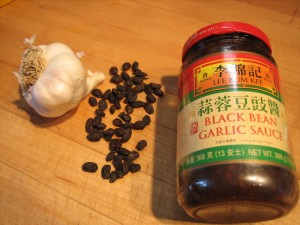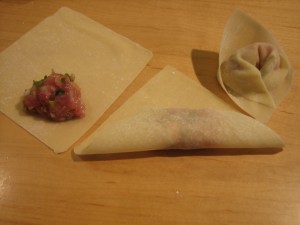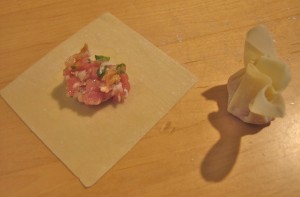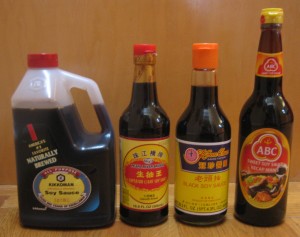
The key ingredients in black bean and garlic sauce are pungent, earthy fermented black beans and garlic.
The secret to adding robust, savory, salty nuances to food comes in the form of small black beans. These flavor capsules are soy beans fermented with salt and spices until pungent and aromatic. Called fermented black beans, salted black beans, preserved black beans or dou chi or dul see, they magically add a remarkable depth of flavor.
For instance, my mother often stir-fried cauliflower with fermented black beans. She would rinse the beans, then mash them with garlic with the end of the wood handle of her cleaver to make a coarse paste. She would mix the paste with minced fresh ginger and a little soy sauce. Then she would stir-fry the sauce with ground beef and cauliflower. The sauce contributed a earthy pungency to the somewhat bland cauliflower The recipe is on page 27 of The Hakka Cookbook. If you’re in a hurry, use a purchased black bean and garlic sauce found in many supermarkets. I find the Lee Kum Kee brand to be a good, widely available brand.
Look for fermented black beans sold in plastic bags or round yellow cartons in Asian markets. The fermented black beans keep almost indefinitely stored airtight in the refrigerator. I also love a few black beans sprinkled over steamed fish or pork. Add a spoonful to stir-fried meat and vegetables. It is remarkably versatile and so delicious.




